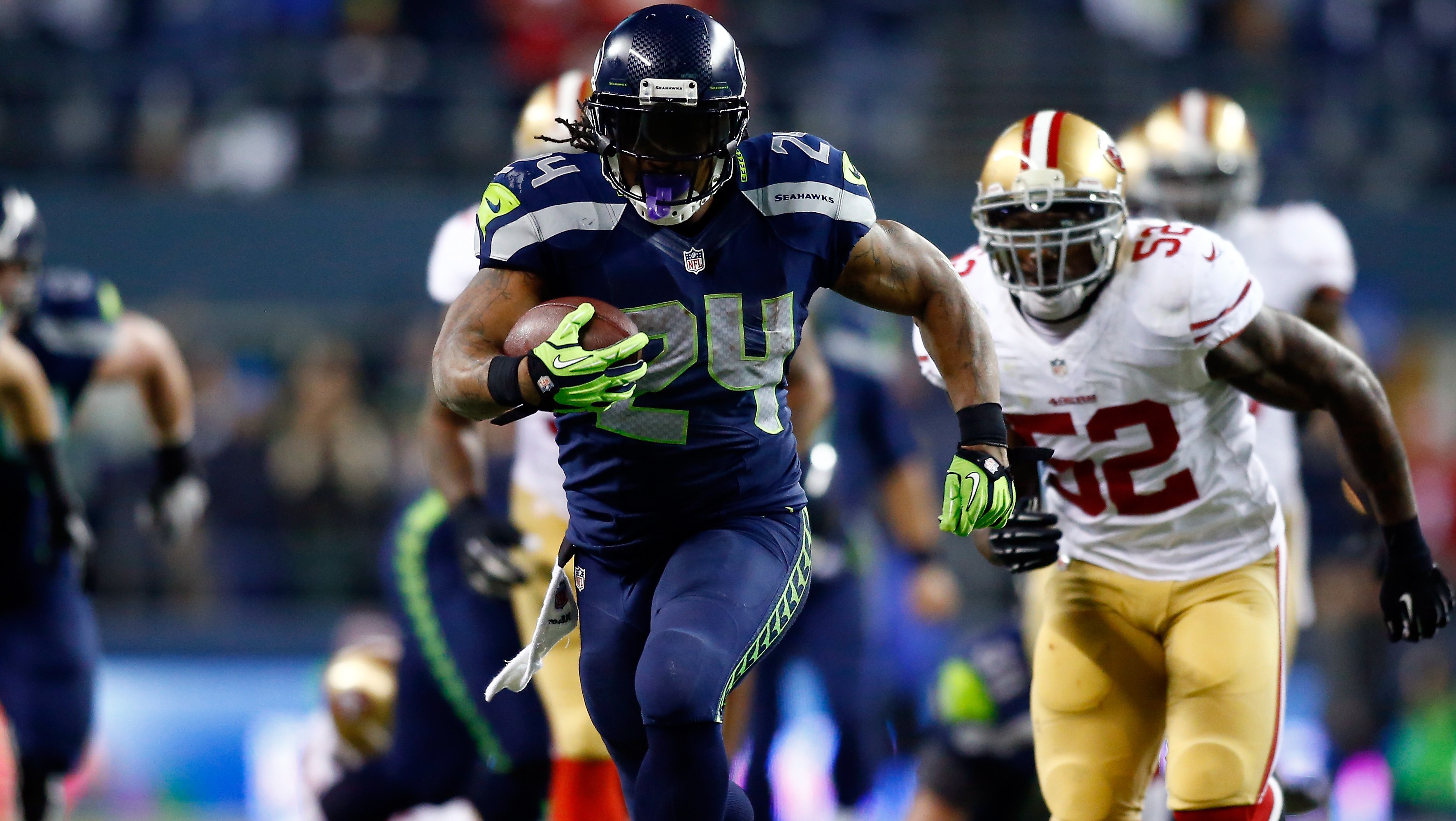STEVE MCGRAIN
Sports Writer
mcgraist@plu.edu
On February 7, 2016, Seattle sports lost an icon. The graceful manner in which he decided to retire from the National Football League could not have been more fitting to the character Marshawn Lynch portrayed.
While many were staring at their television screens on Super Bowl Sunday for the action on the field and ridiculous commercials during intermission, Marshawn Lynch silently went to twitter to post a picture of Seahawks green cleats hanging by a line and a peace sign emoji—a display that brought tears to my eye because of the message.
The reason why Lynch made an impact on the field was his relentless running style, which can be described as “Beast Mode.” His intention was never to run around a defender or to run out of bounds. The intent was to lower his shoulder pads and run right through whoever was in his way.
Initially this running style was unique in the NFL, only Houston Oilers Earl Campbell can fit in the same bubble as Lynch. Nowadays, due to the exhilarating approach, running backs are beginning to adopt this technique. This position that used to be designed for small and faster players is transitioning to be for bigger and powerful ones.
Marshawn Lynch has arguably the greatest run in NFL postseason history to his name.
In 2010, New Orleans just came off of a Super Bowl title. Seattle won the NFC West with a 7-9 record. The worst record for any team to receive a playoff berth.
Quarterback Matt Hasselbeck handed the ball to Lynch, who ran to the left, shedding two defenders, transitioned to the right and the rest is what the Legend of Beast Modeisknown for. The run caused seismic activity around Centurylink.
Yes, the 12s inside the stadium caused an earthquake, but a name more suitable for the Seahawks faithful is “BeastQuake.”
This mentality gave fans the perception that at any moment when the football was placed in #24’s hands, he was going to run all the way for a Seahawks touchdown. It was a game changer; there are not many players who contain this quality.
Every football team has players who fit certain roles. For Seattle on defense, Safety Kam Chancellor is the intimidator; no receiver wants to come across the middle for fear that he will be dismantled. The brash outspoken leader, cornerback Richard Sherman was going to shut you down and let everyone know about it. The quiet quarterback of the defense was Safety Earl Thomas; the secondary was his zone, and no one was going to be throwing a football in his area.
On Seattle’s offense, the outspoken leader is quarterback Russell Wilson, and the intimidator and quiet leader was Marshawn. Now with him gone, Thomas Rawls will have to step into the shoes of being the intimidator, something he has already displayed this season.
The thing I will miss most about Lynch won’t be drafting him for the fifth straight year in my Fantasy Football Draft or the media making a big deal out him not giving them a quote.
It will be standing inside Centurylink, anticipating the next time Marshawn Lynch activates Beast Mode on the opposition and yelling Beast with 67,000 others.
Next time that happens, hopefully it will be during his induction ceremony into the Seahawks Ring of Honor and retiring of his number, 24.
Thank You Beast for the memories, and farewell.


















